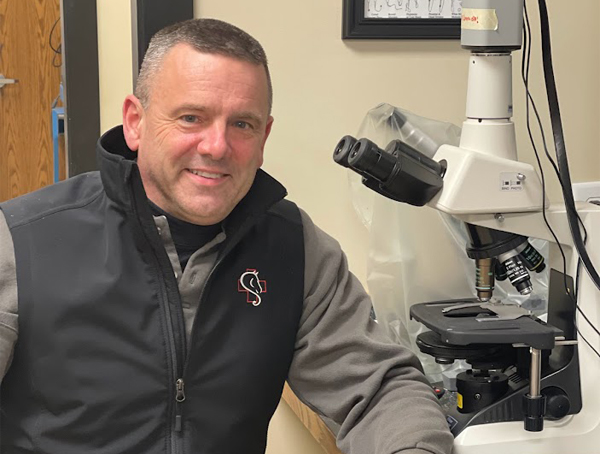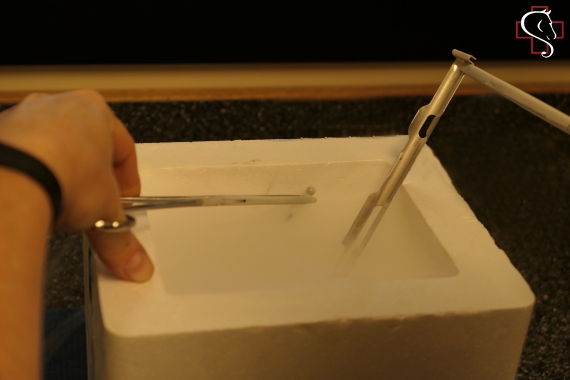Embryos
Embryo Transfer | Embryo Vitrification
Saginaw Valley Equine Clinic offers embryo transfer for owners and breeders of high-quality horses.
Embryo transfer allows a mare to produce offspring without having to herself carry the foal to term. This mare that provides the maternal genetics is called the donor mare. The recipient mare acts as the surrogate and carries the fertilized oocyte (now an embryo) to term, foals out, and raises the foal. The donor mare’s reproductive tract is monitored every 12-24 hours simultaneously with a group of recipient mares to ensure a synchronous environment for the embryo. The donor mare is inseminated at an ideal time frame relative to ovulation and ovulation is confirmed via transrectal ultrasonography. The exact date of ovulation is important to be able to best align the recipient mare. On Day 6-8 post-ovulation, an aseptic uterine lavage (flush) is performed of the donor mare. The flush fluid contents are passed through a special filter to isolate the 6- to 8-day embryo for transfer into a recipient mare or vitrified for later transfer. If all goes as planned, the new recipient mare will care for and grow the donor mare’s embryo for the next 11 months and produce a live foal. SVEC works with multiple recipient herds across the US to find the one that works best with a mare owner’s situation. In some cases, a client’s own other mares can be used as recipients.
Saginaw Valley Equine Clinic offers embryo vitrification for preservation of genetic material.
Vitrification, which means “to transform a substance into glass” is a technique used to freeze equine embryos. This special process for equine embryo that allows them to survive the freezing and thawing process. Equine embryos are vitrified to allow SVEC to ship the embryo internationally, better timing for pregnancy and subsequent foaling, timing with a specific recipient mare, while waiting for genetic testing, and pending donor mare and stallion performance results.
The process for producing a vitrified embryo starts with breeding and flushing as for routine embryo transfer. The only small difference in the process is that the embryo is flushed out on day 6-7 post ovulation, which means it is smaller and can be vitrified with a higher success rate. Once SVEC obtains the embryo, it is washed and then processed using special solutions to allow it to be vitrified safely. SVEC then packages the embryo into an individual small container and freezes it in liquid nitrogen. Once vitrified, an embryo can be stored indefinitely in special tanks and shipped long distances. Embryos that are to be shipped internationally require additional testing and / or processing to meet certain import requirements.
Transfer of the embryo involves a warming process with special solutions, loading into a straw, then transfer into the appropriately timed recipient mare. Use of a vitrified embryo allows for fewer recipients to be prepared, as the embryo is frozen in time until the recipient is ready.

Embryo Transfer Benefits include:
- A mare has minimal interruption to her training and competition schedule
- Multiple offspring can be generated from one mare within a breeding season
- Different stallions can be used for each desired pregnancy

Embryo Vitrification Benefits include:
- Indefinite storage is possible
- Vitrified embryos can be shipped worldwide
- Recipient mare timing is easier, allowing for a smaller recipient herd



